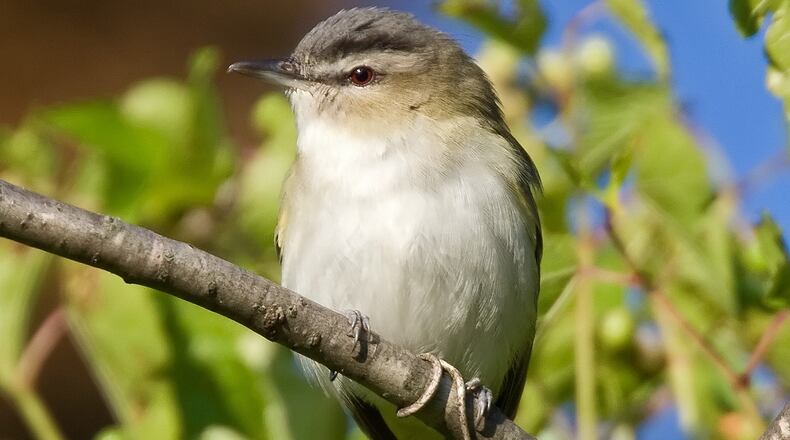Fat is beautiful. Or at least it is to billions of North American birds now migrating — or getting ready to migrate — to winter homes in Mexico, Central America, South America and Caribbean islands.
Birds fuel their long, arduous journeys with body fat. In addition to having twice the energy of carbohydrates and protein, fat is lighter and less bulky. In preparation for migration, birds build fat reserves up to 40%-60% of their body weight. By contrast, nonmigratory species such as cardinals and bluebirds maintain a “fat load” of about 3%-5%.
Migratory birds are physiologically specialized to quickly fatten up and use fat at very high rates to sustain flight for many hours — or even days. For many birds, that includes amazing nonstop flights of some 600 miles over the open Gulf of Mexico.
To build up fat, most of Georgia’s 54 Neotropical songbird species — ruby-throated hummingbirds, warblers, vireos, thrushes, tanagers, flycatchers, orioles, swallows and others — become gluttons. Beginning two to three weeks before heading south, they start putting on weight at an astonishingly fast pace. (Neotropical species, some of Georgia’s most melodious and colorful songbirds, nest in spring in North America and overwinter in the southern tropics.)
During the fattening process, many Neotropical migrants do a dramatic thing: Although most of them are primarily insect eaters, they start gorging on high-energy berries and fruits loaded with carbohydrates and lipids (mostly fatty acids). Carbohydrates can be readily converted into fat; lipids can be directly absorbed by the body and stored.
Only in exceptional cases, however, do migratory birds complete their journeys in a single flight; most make several “stopovers” during which they rest and refuel and then resume their treks. A stopover could be something as simple as your backyard. By providing nectar feeders and making available native berry-producing plants in your yard, you can help the birds.
IN THE SKY: From David Dundee, Tellus Science Museum astronomer: The moon will be full Tuesday night. Mercury is low in the east an hour before sunrise. Venus is higher in the east and rises three hours before sunrise. Mars rises in the east about an hour before midnight. Jupiter and Saturn rise in the east just before sunset; Saturn will appear near the moon Saturday night.
About the Author
The Latest
Featured


